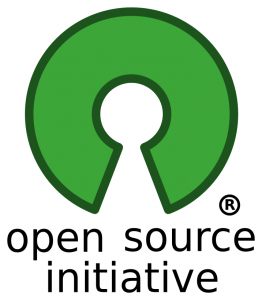My previous post contained general thoughts on the conference so far, but nothing about the content so far. So I’ll now share some high-level thoughts on the content of what is going on. Oracle has respectfully requested that we not divulge some of the sensitive particulars and roadmappy stuff, so I’ll gloss over that a bit and just say that maybe you should just come to these things if you want to be in the cool kids club, but I digress.
Essbase is in good hands
My first thought of the day was that anyone who thought that when Oracle bought Hyperion they would take Essbase out back and shoot it had nothing to worry about. Oracle is quite clearly putting tremendous resources into seemingly all facets of the product. Furthermore, it wouldn’t have been a bad strategy (but definitely not a good strategy) to put Hyperion on cruise control, throw a few resources at it to keep the lights on and then some, and keep it there. But Oracle quite obviously has some big thinkers and perhaps more importantly, big thinkers that Get Shit Done that zoomed out and strategized how they could effectively leverage, break down, take apart, and combine the good technology they bought into a comprehensive suite of tools.
Predictive Analytics & Exalytics
Years ago, a light bulb went off for me when I started to think of Essbase and multidimensional tools as not merely a way of seeing how an organization performed, but rather to predict how it would perform. To that end, Essbase is recognized as a critical tool for organizations to look ahead. For Oracle’s part, they recognize this and are acting accordingly. Despite my interest and recent exposure to big data and cloud computing I haven’t had a chance to touch the likes of Exalytics yet, and I haven’t gone out of my way to get involved with it. But after hearing more about all that is going on with it and where it is headed, I am going to move it up on my priority list. Despite the title of this section, I’m not saying that anything to do with predictive analytics is automatically correlated to Exalytics. I am saying, however, that if you want to model the future with many variables and dimensions, you need something that can crunch a crapload of data.
ADF Love
ADF is getting a ton of love. I am more of an Eclipse guy and the tooling for ADF in Eclipse has left me wanting in the past, and furthermore I have tended to stick with other technology stacks (even within the Java ecosystem), but as a developer that does a lot in the Oracle world I am going to give ADF a much, much stronger look in the upcoming year. There are some very interesting things going on with ADF Mobile that I was previously unaware of that are worth a look.I have a bias towards native apps as they seem to fit more into my view of apps being crafted with precision, fluidity that at present HTML5 can’t quite seem to beat. However, it is very compelling to be able to easily deploy to multiple disparate platforms with one code base. I have some colleagues, though, that lament the need to write once and fix everywhere, almost as if they reliving the initial and somewhat dishonest promise of early JVMs (“write once, crash everywhere” or thereabouts).
Modules Everywhere – There’s a module for that!
There’s no shortage of Oracle developing modules for this and that. Planning modules, modules for other things, and so on. These modules tend to be quite specific in nature, such as for dealing with workforce, capex, tax management, and so on. Architecturally, it’s good that these are modules because from a design standpoint you don’t want a huge monolithic product that tries to be all things to all people. Modules aren’t a bad thing. I just find the juxtaposition between a generic platform and domain specific modules on top of it to be amusing for technical and geeky reasons.
For example, think of a normal relational database server that only has the notion of numbers, strings, references to other columns, and so on. This generic database has no notion of taxes, employees, and whatnot. Those things can all be modeled within the technology itself, of course, and the database will happily comply. It’s within the purview of the developer to utilize the technology to solve the problems and provide for the needs of the business – the database or the cube become the blank slate upon which we paint the solution, adding semantics to abstract concepts. Like I said, it’s not a bad thing, I just find it a little amusing since I’m a geek. You’ve undoubtedly heard of “There’s an app for that.” – in my mind I picture the Oracle folks saying, “There’s a module for that!”
LCM
What used to be a vengeful, impossible-to-please digital bag of spite has evolved into an essential tool in the toolbox. So, yeah. Yay Oracle.
Onward to Part 2
I am absolutely spent. I have a few more thoughts that I’ll wrap up tomorrow. If you read this and are at the conference, please say hi!
